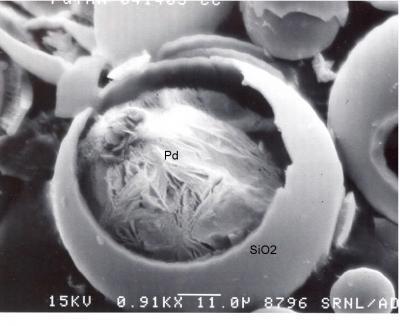Researcher Idurre Kaltzakorta prepared as part of her doctoral thesis microcapsules of silica (the material that forms the basis of glass) containing an organic substance that provides cement with new properties

Dr. Moshe Nahamani
Cement (and its derivatives) is one of the more common materials used in the construction industries, providing good performance at low cost. During the last few years, one of the topics of scientific and technological research focuses on the inclusion of additional functions for this material. In particular, the possibility of adding new capabilities to cement such as self-repair of cracks as well as thermal energy storage is being investigated.
As part of her doctoral thesis, researcher Idurre Kaltzakorta prepared microcapsules of silica (the material that forms the basis of glass) containing an organic substance that provides cement with new properties. The researcher chose two types of organic materials, each of which corresponds to the required new feature. Therefore, on the one hand, the tiny capsules were filled with a variety of epoxy resins (used to make adhesives) to provide the cement with the ability to repair cracks by itself. On the other hand, the capsules were filled with substances that change their state of aggregation. These are materials that absorb or emit a large amount of heat during the transition from one state of aggregation of the material to another state of aggregation (solid to liquid or from liquid to gas, and vice versa), thereby allowing heat energy to be stored in the cement materials.
The researcher examined the synthesis of inserting a substance into a tiny capsule through a combination of sol-gel chemistry with emulsion (emulsion) technology. This method allows the introduction of organic matter into a tiny capsule under conditions of moderate temperature and pressure.
From the moment the tiny capsules were received, the researcher examined their characteristics using advanced and diverse analysis methods such as X-ray tomography, scanning electron microscopy, mechanical tests and differential scanning calorimetry (DSC).
In conclusion, in her research work, the scientist demonstrated the applicability of developing a new generation of types of cement that allow self-repair of cracks as well as storage of heat energy, based on tiny capsules of silica. This research led the scientists to apply for a patent for their invention.
The researcher concludes and states that the research work of the issuing invention is sustainable. On the one hand, the ability of the cement material to repair itself increases the longevity of the structures. On the other hand, the use of material capable of regulating the temperature inside the buildings will increase their energy efficiency.

6 תגובות
2 It is forbidden under any circumstances to add Bigibond to the concrete! Add only to the plaster for which the Bejibond is intended, (so he told me and warned me, a building materials teacher) it actually weakens the concrete!
For the other questions, of course this concrete is supposed to be active and repair cracks after being poured for years... otherwise what is the invention? as well as absorb heat and release it outside and thus act as an insulator
Still for the purpose of application in the field it will probably be necessary to design suitable parts or adapted structural parts..it will not happen overnight!
Scanning electron (and not electron) microscope
Looks like something that could have been very helpful in Fukushima.
I understand that even after the longest time the features will be preserved, in theory without a time limit.
There are different types of cement that can be used to achieve similar results.
You can also add fibers to prevent cracking.
According to my experience, even today, when people want to pour concrete, they often add super glue
Silicone base (for example BG Bond).
And beyond that, the concrete in the drying process heats up even without the new invention.
If someone can answer, is the self-repair one-time and only happens during the concrete pouring process (and prevents cracks)
Or even if the concrete has been "standing" for two years, some of the features described in the article are still preserved.
I will find -! An invention…